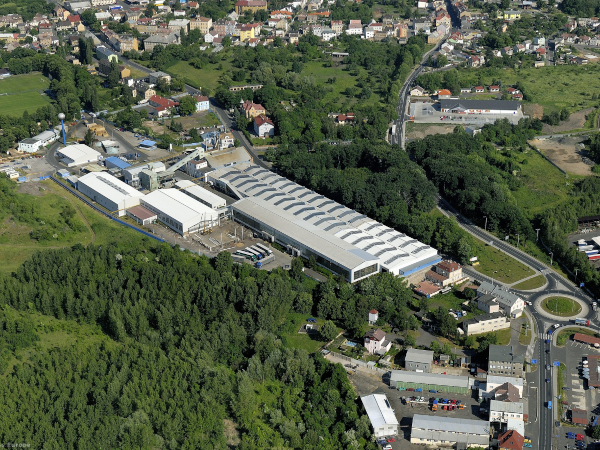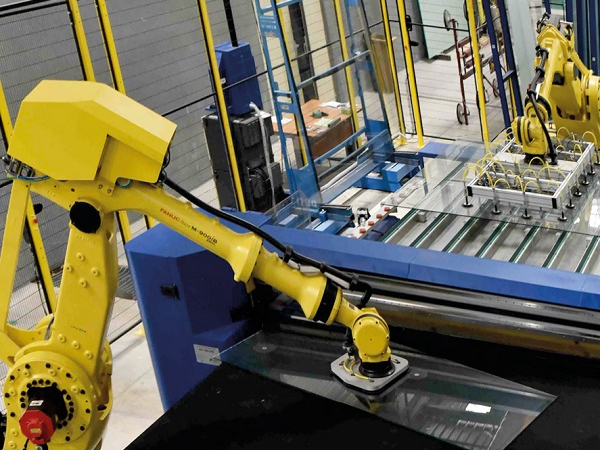Date: 25 November 2005
This is a unique insulation product that enables builders to quickly and easily achieve thermal, acoustic and fire compliance with building regulations.
In the building materials industry as much as any other, big is beautiful. Saint-Gobain Isover is the premier world provider of thermal and acoustic insulation solutions, anchored in clear global leadership in glass wool technology and products. BPB Group, meanwhile, is the world leader in the supply of plasterboard and gypsum plasters and is a major supplier of insulation, ceiling tiles and related products.
Here in the UK, BPB British Gypsum manages five plants. It is the UK's leading supplier and foremost authority on internal wall and ceiling systems, with a century-long history and a proven record of providing effective lining solutions for many of the world's most prestigious buildings. This is the company that created the unique vaulted ceiling for Bluewater Park in Kent, Europe's largest retail and leisure development with 154,000 square metres of floor space.
One of the key strands of the parent groups strategy centres on developing strong partnerships to unleash synergies with businesses in related markets. The highly successful joint venture behind the Isowool product that brings together two market leaders is a prime example.
Managing director Alex McLeod feels that a factor which really sets Isowool apart in the marketplace is the products unique sustainability profile. Sustainability is a major issue for us as a company and with Isowool we have a great story to tell, he said. As a highly efficient insulation material, the use of Isowool is supporting a key governmental initiative to reduce overall carbon emissions into the atmosphere.
However, the product itself also has a very unusual background. The story behind Isowool is one that will be of interest to any procuring body that takes its environmental stance seriously. The Isowool product is manufactured from silica sand. This is the earths most abundantly occurring mineral, and an infinite natural resource.
Further to this, the batch mix contains up to 75 per cent recycled glass waste. The recycled material can be post-consumer glass, from housing regeneration projects, for example, or it might be reprocessed waste from bottle and flat glass manufacture that would otherwise go to landfill. Moreover the glass wool product has been awarded an A summary rating in the BRE Green Guide to Specification.
The largest part of our raw material is derived from waste glass. That is our starting point, continued McLeod. Then within the manufacturing process itself, whatever waste we generate is recycled back into the production process.
Since the beginning of this year, Nicolas Suret, plant manager of the Runcorn facility in Cheshire where Isowool is manufactured, has been leading an initiative to transform the operation into a world class manufacturing facility. The drive towards world class manufacturing comes from the BPB Group and is also supported by Saint-Gobain Isover 5S programe, he explained. Safety, quality and environmental concern are key corporate objectives that are best supported by advanced manufacturing technologies.
Strong, solid investment is also an established feature of BPB and Saint-Gobain Isover, he added. When the company invests it is in top quality plant that we expect to be performing for up to 30 years.
As a result of ever more stringent regulatory control, the market for Isowool is very buoyant. The UK is reporting double-digit growth in the demand for insulation products and the need for additional capacity at Runcorn was identified well over a year ago. However, it made much better sense to tackle some of the weaknesses of our existing installed capacity before making any further investment, said Suret.
The most important initial step was the adoption of a new palletisation system to store and move the product. We currently manufacture around 30,000 metric tons of insulating products a year, he said. Until the start of the year, all handling was manual. Before reaching the customer, each roll was handled four times. It was time to change all that.
The switch from bulk to palletised handling started in November 2004 and lasted 12 weeks. The price of the upgrade was a hefty £3 million, broken down between the development of an external 17,000 square metre storage area, the acquisition of a new rolling machine and the installation of new palletising equipment. Also on the shopping list was a robot to stack the products and a stretch-wrapping machine to attach and roll the products in a protective plastic film.
Today, no finished product is handled manually: The rolls and batts are now compressed, bundled in groups of four to five, then stacked on a pallet, which is the new storage unit. Palletisation has significantly improved the working conditions and safety of our 130 employees and those of our customers. It has also helped free up production capacity to meet peak demand. All these advantages are passed down the line to the end customer who benefits from faster loading times and leak free product packaging. We were the first in the UK to offer this fully palletised solution and it reinforces our offer of innovative and high quality solutions for the insulation market, he said.
Just this one change from bulk handling to palletised management has led to substantial productivity savings. Truck loading times dropped from three man hours to a half hour and each truck can now transport over 500 rolls, compared with the previous 360. Staff freed up by the switch have been absorbed by the increase in activity which required the creation of a fifth team.
Isowools advanced palletisation and packaging technology further adds to the companys already outstanding environmental credentials. As the high compression packing means more insulation in a smaller space, the result is better vehicle utilisation, which acts to further reduce the environmental impact of transportation. This complements the already great environmental story at British Gypsum-Isovers Runcorn plant: Zero effluent and zero fibrous waste to landfill.
There is another benefit too. At the moment all our customers are in the UK. As a result of the palletisation investment we have been able to standardise our product format. This means that we are now in a much better position to export to the rest of Europe, which opens up a whole new world of opportunity, Suret added.
Implementing TPM as part of a wider BPB led improvement programme (world class manufacturing) has been another important early initiative. Autonomous maintenance and preventative maintenance link through to the next round of investment we plan, he said. When it comes to making specifications at the design stage, we want early equipment management and intervention to be built in features of the upgrade.
McLeod added: Palletisation has delivered excellent benefits that are reverberating along the entire supply chain. Similarily, the development of TPM has already seen its first benefits. However, the improvement programme has only just got underway. We are expecting to see a lot more great things happen.
The plant at Runcorn has witnessed great change and improvement as a result of the investment that has been made to date. With most of the groundwork now completed, the company is poised to invest another £10 million early next year to expand its capacity by a further 50 per cent. We will be upgrading the existing line to increase its pull rate and replacing the curing oven next year, said Suret. This will mean closing the plant for a short time, which will give us the opportunity to move on to the next phase of our improvement plan taking our workforce with us investing in training in WCM techniques. We have successfully carried out a number of pilot projects to get the methodology right for our approach to autonomous and preventative maintenance as well as two projects looking at focused improvement. The next step is cascading that work to each of the five shifts that operate the plant.
Commenting on the significant progress that has already been made, McLeod was eager to point out the effect the changes will have on the companys customer base always the most important part of the equation. He said: Our entire strategy is focused on developing innovative new solutions for our customers. As a consequence, we have developed new products that help our customers meet changes in the regulatory environment, particularly acoustic solutions.
These are exciting times for British Gypsum-Isover as we finalise our plans for capacity expansion. Because of our products unique insulation and environmental properties, we believe we are now extremely well placed to help our customers meet the rising demand for insulation with innovative solutions that are compliant with thermal, acoustic and fire regulations and at the same time allow builders to demonstrate a real concern for their impact on the physical environment, he concluded.







Add new comment